#Umayyads
Explore tagged Tumblr posts
Text
The Diversification of the Caliphate's Elite
Recent research has demonstrated that, while Arabized Persians from Kufa in Iraq and Persianized Arabs in Khurasan were involved in the revolution that toppled Islam's first caliphal dynasty, the Umayyad Dynasty, in 750 CE, the preponderant element was in fact the Iranian masses. Though it can no longer be said that the Revolution put an end to the distinctly ethnically Arab empire —that will come a little later— the success of the revolution did catalyze a redistribution of ethnic weights within the empire. The group that benefited the most from this sea change were the Persians, who would come to wield significant political, intellectual, cultural, and religious influence. In the process the ethnic Arabs became less and less observable in administration and in the various intellectual fields, including the religious sciences, and under the new caliphs these Arabs would even become persona non grata. Though they adopted the faith and language of their conquerors, some Persians were openly contemptuous of the customs and traditions of the Arabs, and this anti-Arab sentiment greatly impacted the Abbasid caliphs who, being the sons of non-Arab mothers, were notorious for the infatuation with Persian sedentary, urban culture and their disdain, if you will, for ethnically Arab, nomadic culture. This new philo-Persian and anti-Arab sentiment, I argue, coupled with the eventual conversion to Islam of the masses of non-Arabs within the empire and the gradually declining visibility of ethnic Arabs, contributed to the general de-arabization of Islamic culture and tradition[.]
- Wesley Muhammad ("Whosoever Says That the Prophet is Black is a Disbeliever": The Diversification of the Islamic Empire and the Developing Portrayal of Muhammad)
3 notes
·
View notes
Text

Interior of the Umayyad Mosque in Damascus, Syria
Syrian vintage postcard
#briefkaart#photography#vintage#syrian#tarjeta#mosque#postkaart#postal#damascus#photo#postcard#historic#carte postale#the umayyad mosque#umayyad#ephemera#interior#sepia#syria#ansichtskarte#postkarte
63 notes
·
View notes
Text
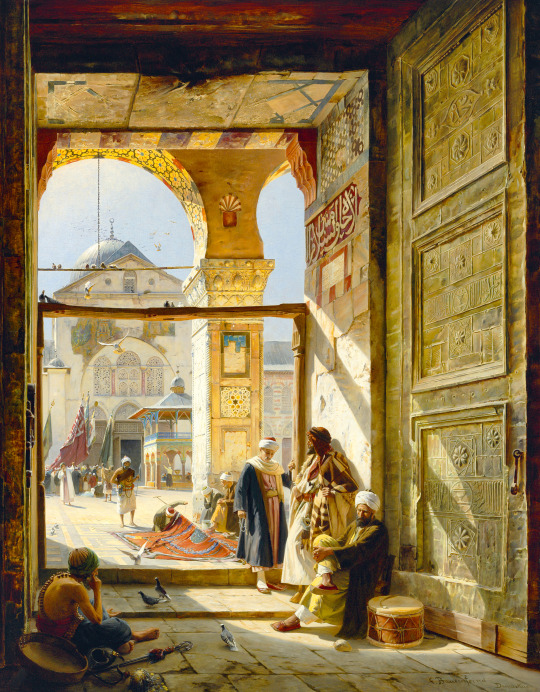
Gate of the Great Umayyad Mosque, Damascus
Gustav Bauernfeind. 1890
Oil painting.
#histort#vintage#1890#painting#oil painting#umayyad mosque#damascus#Gustav Bauernfeind#david tennant#baftas#bafta 2024#eurovision#c4news#bethlehem#ethnic cleansing#doctor who
56 notes
·
View notes
Text
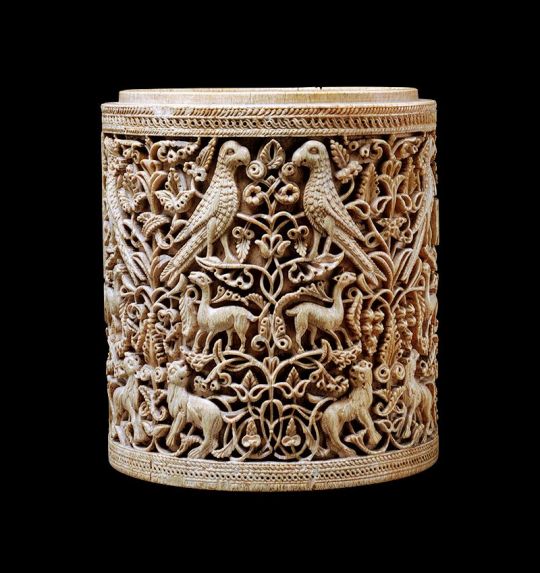
Pyxis, ivory with chased and nielloed silver gilt mounts, 966 CE/355 AH, The Metropolitan Museum of Art, ISAW no. 147.
"Pyxides were used as containers for jewelry and perfumes, and commonly made by sawing and hollowing out a section of elephant tusk. The dense, symmetrical, repeating patterns on this example testify to the skill of the ivory carvers at Madinat al-Zahra. Scrolling vines, flowers, and palmettes exhibit the characteristic arabesque and vegetal patterns of Islamic art and are paralleled on many of the carved wall reliefs and column capitals from the palace. The mirrored pairs of parrots, gazelles, and lions provide a sense of whimsy and may also allude to the fauna of the Umayyads’ ancestral home in Syria."
#córdoba#spain#medina azahara#madinat al-zahra#islamic art#umayyad dynasty#umayyad#ivory#niello#pyxis#966#10th century#the met#the metropolitan museum of art#355 ah#al andalus#españa
12 notes
·
View notes
Text

Ewer with a Cock-Shaped Spout, 8th–early 9th century. MET (ID: 41.65). An almost identical ewer was unearthed near the site where the last Umayyad caliph, Marwan II, was assassinated at Abu Sir in Egypt. Ewers of this type may have been produced in Syria for the Umayyad and early Abbasid caliphs. The pierced decorations follow Byzantine prototypes. The spout, in the shape of a three‑dimensional crowing cock with ruffled wings, is rendered with great realism. (MET)
#islamic#islamic history#islamic art#islamic culture#syria#syrian art#syrian history#umayyad#umayyad caliphate#medieval art#middle ages#medieval history
15 notes
·
View notes
Text
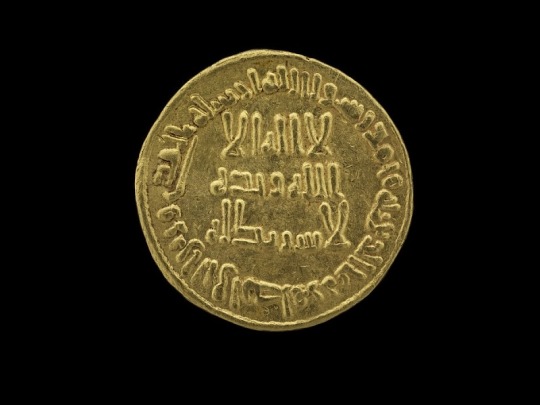
1 Dinar, Umayyad Dynasty, 713-714.
The Smithsonian Museum of American History.
#art#culture#history#middle eastern history#umayyad#umayyad caliphate#north africa#middle ages#medieval#medieval history#the smithsonian museum of american history#the smithsonian#coins
17 notes
·
View notes
Text
evil part of my brain telling me to do an islamic golden age au of my characters.
#cannot afford to spend a second on it right now though. uni workkkk. but. itd be so much research. buttttt#more specifically umayyads or maybe abbasids. but. ourghhh
6 notes
·
View notes
Text
rome: [dies]
visigoths, rizzlessly: hello little boy i guess i'm your dad now
baby antoninus: who the hell are you i want my papa
antonio, several centuries later: MY FATHER, EL BISIGODO, WAS THE MOST VALIANT OF CHRISTIAN KNIGHTS,
#hws rome#hws spain#hws visigoths#visigoths/athaulf is my friends oc he's very lame and very tired#when umayyads rolled up in the 700s like YEAH TIME TO CONQUER GOD IS WITH ME visi was like oh thank god. just let me die.
8 notes
·
View notes
Text
I love learning very basic facts about a famous and well-studied topic and going like "whoa this is so crazy does anyone else know about this???" it never gets old
#i'm reading a book about religious/ethnic tension and coexistence in umayyad al-andalus rn#and the author is just giving background info about how the territory was governed#and i (guy who LOVES learning about bureaucracy) am eating it up
3 notes
·
View notes
Text


Coins of the Ummayyad Caliphate (685–750 A.D.), unnamed ruler, time of Abd al-Malik ibn Marwan. Details of the inscription can be found here.
#images#ideology tag#maanblr etc#islamic history#islam#history of islam#coins#ancient coins#islamic coins#islamic#umayyad caliphate
4 notes
·
View notes
Text
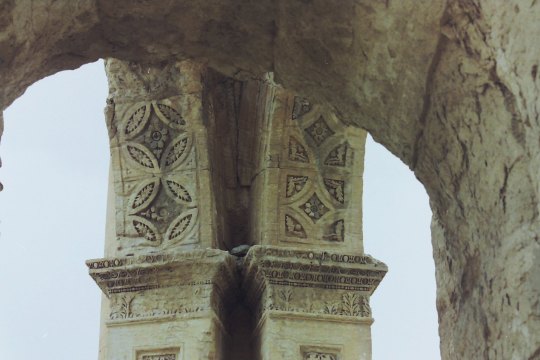
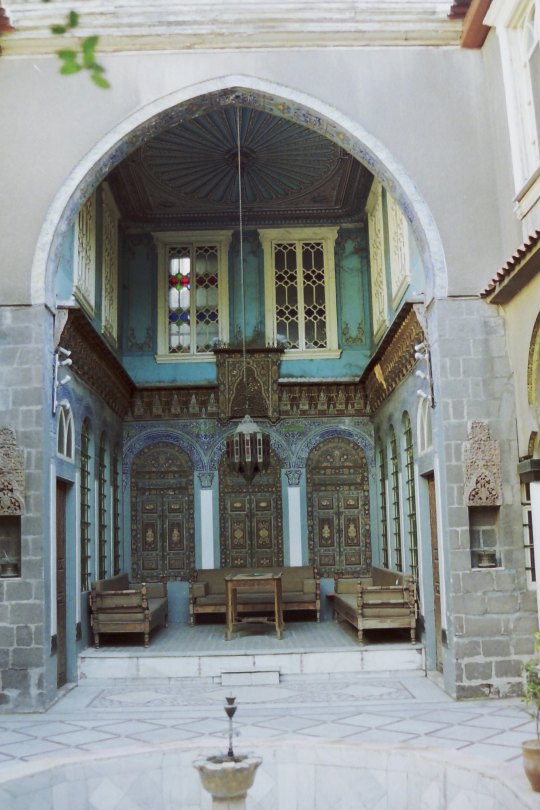


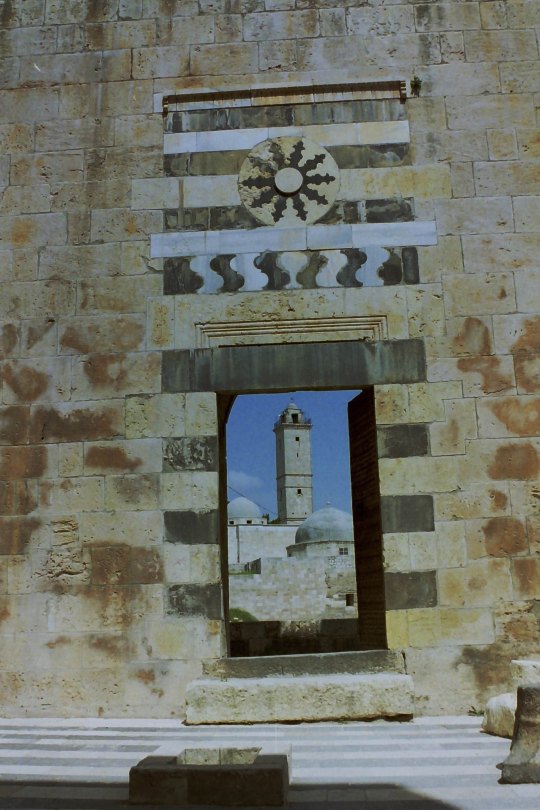

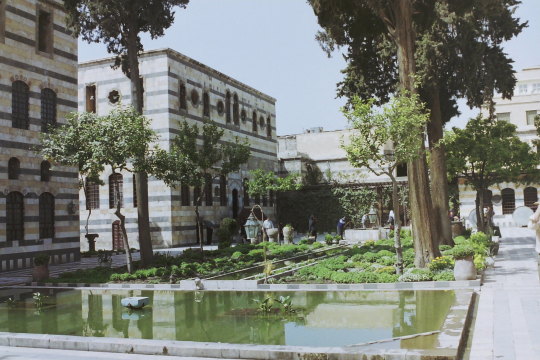
Syria, 1993. (2) (3) (4) (5) (6) (7) by jpotto
Via Flickr:
(1) Palmyra. (2) Secluded square off Straight street, Damascus. (3) Ommayed mosque, Damascus. (4) Hama, waterwheels. (5) View from the Citadel. (6) Citadel, Aleppo. (7) Al Azem palace garden, Damascus.
#ruins#stone carvings#chairs waiting#umayyad architecture#historic buildings#garden#1990s#syria#damascus#aleppo#mosque
42 notes
·
View notes
Text

Umayyad Mosque in Damascus, Syria
Syrian vintage postcard
#postkarte#postal#umayyad mosque#ansichtskarte#syria#tarjeta#umayyad#ephemera#postcard#photography#carte postale#vintage#mosque#syrian#briefkaart#damascus#sepia#photo#postkaart#historic
15 notes
·
View notes
Text

The Battle of Tours, October 732 by Charles de Steuben
#battle of tours#battle of poitiers#art#charles de steuben#umayyad#invasion#gaul#franks#frankish#charles martel#aquitainian#muslim#christian#history#europe#european#germanic#abdul rahman al ghafiqi#umayyad caliphate#france#western europe#christianity
62 notes
·
View notes
Text
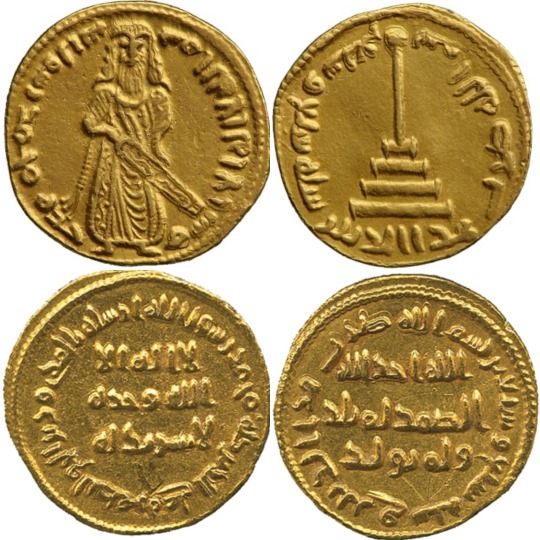
First purely Islamic Dinar After Coins transformation from Sassanid and byzantine financial system dated 77H.
Both minted in dimashq.two type were issued in the same year . One on Byzantine style, and the bow purely Arabized .
A: Inscription: بسم الله لا اله الا الله و حده محمد رسول الله
Design: Standing caliph figure with girdle band shown in a very thin loop, Arabic inscription around clockwise from 1h,all enclosed by traces of beaded circle
Inscription: بسم الله ضرب هذا الدينار سنة سبع و سبعين
Design: transformed cross on four steps surmounted by a small globe, Arabic inscription around clockwise from 1h,all enclosed by traces of beaded circle
B: Dating77 AH (= AD 696–698), Obverseلا اله الا / الله و حده / لا شريك له, Arabic inscription in field, Arabic inscription anti-clockwise in margin from 3h (Sura 9: v. 33 (in part)), all enclosed by beaded circle,
Arabic:
محمد رسول الله ارسله بالهدى و دين الحق ليظهره على الدين كل
Reverseالله احد الله / الصمد لم يلد / و لم يول��, Arabic inscription in field (Sura 112: vv. 1-3), Arabic inscription anti-clockwise in margin from 1230h, all enclosed by beaded circle, بسم الله ضرب هذا الدينر في سنة سبع و سبعين
#archaeology #history #ancient #art #archaeologist #ancienthistory #travel #archaeological #iraq#ksa #museum #halab #heritage #egyptology #arthistory #archaeologylife #culture #antiquity #abbasid #photography #temple#islamic coins #Umayyad #Fatimid #dirham #dinar #الصديق_الصدوق
#history#archaeology#photography#culture#greek coins#travel#roman coins#palestrina#sidon saida tyre beirut phoenician الصديق_الصدوق#الصديق_الصدوق#umayyad
6 notes
·
View notes
Text
Fifth part of the bookscans of Al Andalus. Historical Figures, here's the previous part
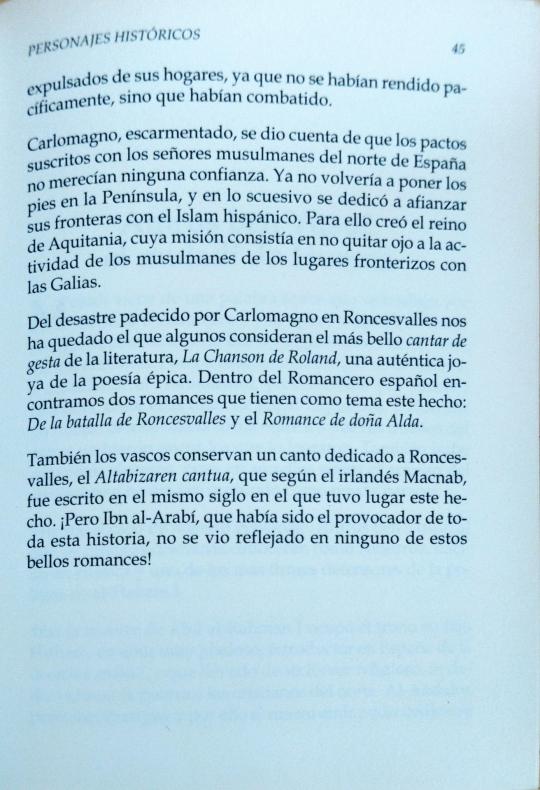
expelled from their homes, since they had not surrendered peacefully, but had fought.
Charlemagne, chastened, realized that the pacts signed with the Muslim lords of northern Spain deserved no trust. He would never set foot on the Peninsula again, and subsequently dedicated itself to strengthening its borders with Hispanic Islam. For this he created the kingdom of Aquitaine, whose mission consisted of not taking our eyes off the activity of the Muslims of the places bordering Gaul.
From the disaster suffered by Charlemagne in Roncesvalles we have remains what some consider the most beautiful song of deeds of literature, La Chanson de Roland, an authentic gem of the epic poetry. Within the Spanish Ballads we find two romances that have this fact as their theme: Of the battle of Roncesvalles and the Romance of Doña Alda. The Basques also preserve a song dedicated to Roncesvalles, the Altabizaren cantua, which according to the Irishman Macnab, was written in the same century in which this event took place. But Ibn al-Arabí, who had been the originator of this whole story, was not reflected in any of these beautiful romances!

Amrus ben Yusuf: the muladí of Huesca
Muladí comes from an Arabic word that translates as "mixed race or foreigner", and was applied to those Christians who converted to Islam and continued living among the Muslims. There were many who decided to abandon Christianity, possibly for practical reasons, including stopping paying taxes, or reaching a position of social relevance among the new owners of the country and there were not a few who achieved it. There was also sincere converts, since in those centuries the roots of the Christianity was not as deep as it may seem.
This was the case of our character, Amrus ben Yusuf, whom the Christian chronicles will know him as Amorroz, born in Huesca and one of the staunchest defenders of the policies of al-Hakam I. After the death of Abd al-Rahman I, his son Hisham, a very pious emir, introducer of the Maliki doctrine in Spain, and who Driven by his religious fervor, he dedicated himself to waging war on the Northern Christians. Al-Andalus remained at peace and therefore the new emir was able to dedicate himself

to harass the Asturian monarchy. But his reign was to be very short, just seven years, and was succeeded by his second son, al-Hakam I.
But the arrival of the new emir was greeted with rebellions in all the border marches. In the most remote areas of Córdoba, the authority of the emir hardly represented anything and the governors lived in a regime of almost total independence. The insurrections against the power of the emirate were more than frequent and al-Hakam had the unfortunate luck to have to face them all. In this hard task, he will have a paladin who will always be at his side: Amrus, who will not hesitate to take radical measures when the matter is serious. This muladí would become famous on what was known as the “day of the pit.”
In the year 797, the always restless Toledo, inhabited mostly by muladíes, rose up against the Umayyad power to recognize a rebel Ubayd Allah ben Jamir, who together with a poet of Toledo, Girbib ben Abd Allah, dissatisfied with the emir, had in charge of calming down the spirits. It wasn't the first time this happen, nor would it be the last, and al-Hakam's predecessors had already had to work hard to put a stop to the rebels of Toledo.
Amrus, who at that time ruled the stronghold of Huesca, was commissioned by the emir to subdue that uprising by the means that it considers opportune. And there went Amrus willing not to disappoint his lord.

He began by eliminating the leader of the rebellion, Ubayd Allah ben Jamir, who fell into a trap prepared by him and then decided to give a lesson to the people of Toledo that they would find difficult to forget.
Amrus, according to him to avoid friction with the population, said that the best would be that, along with his troops, he would settle on a mound near the city. Towards the northwest, near the bridge over the Tagus River, rose a small fortress, possibly on the site now occupied by the Alcazar. When the enclosure was more or less finished, the emir, in agreement with Amrus, he sent an army under the command of his son, the prince Abd al-Rahman, pretending that he was going on an expedition against the Christians and that "coincidentally" had to pass near Toledo. It was a good occasion to invite the prince to visit Toledo, and Amrus, accompanied by the most important people of the city, they came out to receive him and begged him to honor them with his presence.
Abd al-Rahman seemed somewhat reluctant to accept the invitation, but In the end he agreed to it and to celebrate it the most influential mula-díes of Toledo were invited to the new fortress to celebrate a banquet in honor of the emir's son. Until then everything was more or less normal, but as the guests arrived, they became enter through a narrow passage, at the very edge of a large ditch, and the Amrus's executioners cut off their heads, while their bodies was thrown into the pit. That was the " castle of you will go and no you will come back"!
The number of those beheaded was very large. Maybe not as much as 5,000, according to some chroniclers; maybe about 700
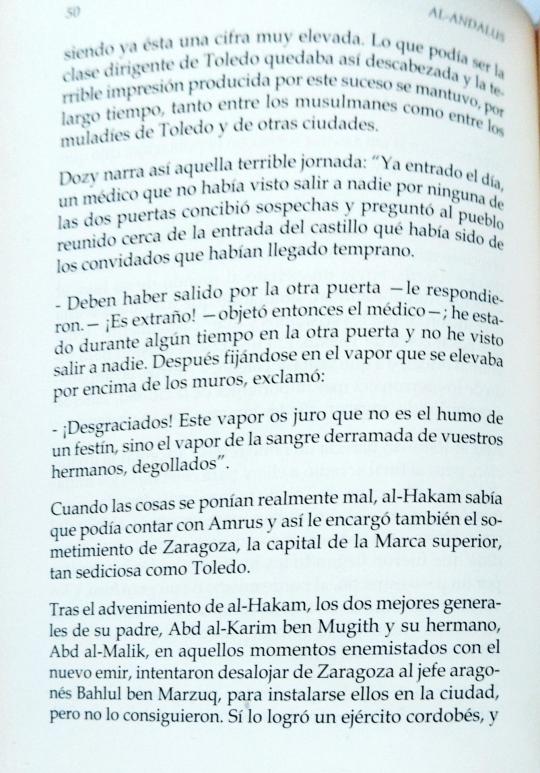
being a very high number. What the leading class of Toledo was thus beheaded and the terrible impression produced by this event remained, for a long time, both among the Muslims and among the muladies of Toledo and from other cities.
Dozy narrates that terrible day like this: "At daybreak, a doctor that had not seen anyone leave through either of the two door, became suspicious and asked the people gathered near the entrance of the castle what had happened to the guests who had arrived early. "They must have gone out through the other door," they answered- It's strange!-the doctor then objected -; I have been for some time at the other door and I haven't seen anyone leave. After watching the steam rising above the walls, exclaimed:
Unfortunates! I swear to you that this vapor is not the smoke of a feast, but the vapor of the shed blood of your brothers, beheaded"
When things got really bad, al-Hakam knew that he could count on Amrus and so he also entrusted him with the submission of Zaragoza, the capital of the Upper March, as seditious as Toledo.
After the advent of al-Hakam, the two best generals of his father, Abd al-Karim ben Mugith and his brother, Abd al-Malik, in those moments at enmity with the new emir, they tried to evict the Aragonese chief Bahlul ben Marzuq from Zaragoza, to They settled in the city, but they did not succeed. He got a Cordoban army, and
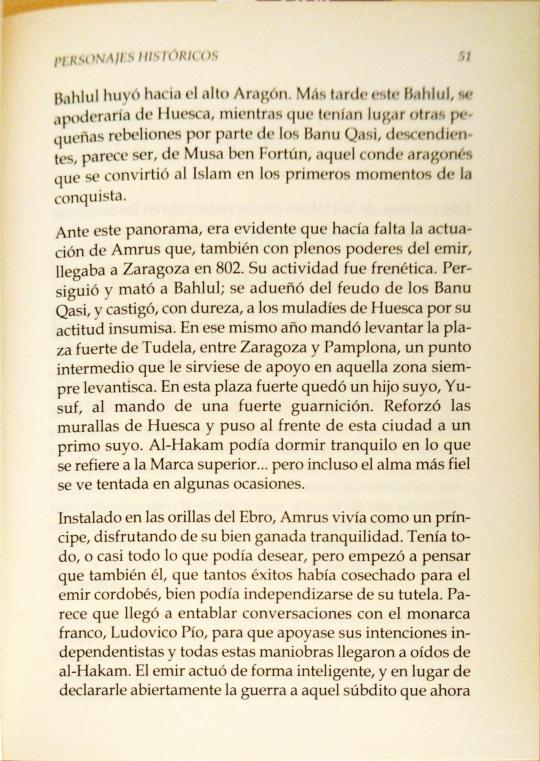
Bahlul fled towards upper Aragon. Later this Bahlul, would take over Huesca, while other small rebellions by the Banu Qasi took place, who were descendants, it seems, of Musa ben Fortún, that Aragonese count who converted to Islam in the first moments of the conquest.
Given this panorama, it was evident that the action of Amrus who, also with full powers of the emir, came to Zaragoza in 802. Its activity was frenetic. Persecuted and killed Bahlul; took over the fiefdom of the Banu Qasi, and harshly punished to the muladíes of Huesca for their rebellious attitude. In that same year he ordered the construction of the stronghold of Tudela, between Zaragoza and Pamplona, an intermediate point that would serve as support in that always upheaval area. In this stronghold there was his son, Yusuf, commanding a strong garrison. He reinforced the walls of Huesca and put one of his cousins in charge of this city. Al-Hakam could sleep peacefully when it came to the Upper March... but even the most faithful soul is tempted in some occasions.
Installed on the banks of the Ebro, Amrus lived like a prince, enjoying your well-earned peace of mind. He had everything, or almost everything he could want, but he began to think that he too, which had garnered so much success for the emir of Cordoba, could become independent of his tutelage. It seems that he came to engage conversations with the Frankish monarch, Louis the Pious, so that supported their independence intentions and all these maneuvers reached al-Hakam's ears. The emir acted intelligent, and instead of openly declaring war on that subject that now
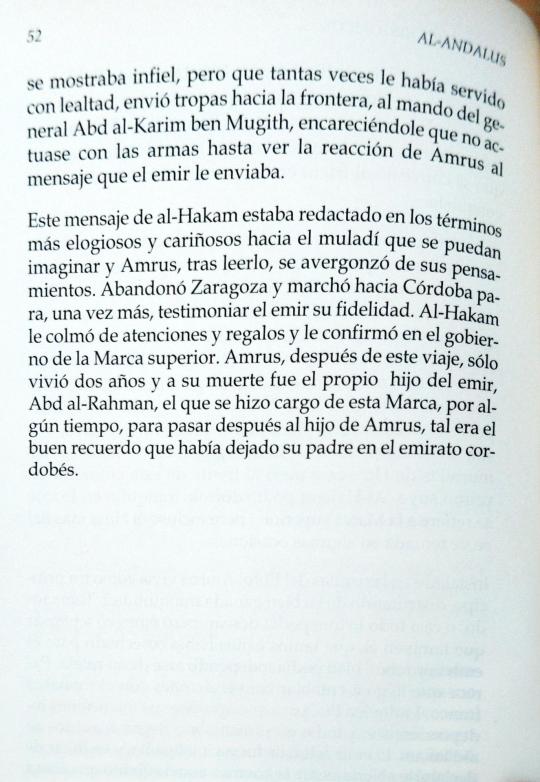
showed to be unfaithful, but that he had served him so many times with loyalty, he sent troops to the border, under the command of General Abd al-Karim ben Mugith, urging him not to act with the weapons until seeing Amrus's reaction to the message that the emir gave him.
This message from al-Hakam was written in the most praiseworthy and affectionate towards the muladí that you can imagine and Amrus, after reading it, was ashamed of his thoughts. He left Zaragoza and marched towards Córdoba to, once again, bear witness the emir his fidelity. Al-Hakam showered him with attention and gifts and confirmed him in the government of the Upper March. Amrus, after of this trip, he only lived two years and at his death the son of the emir, Abd al-Rahman, took charge of this March, for some time, to later pass to the son of Amrus, such was the good memory that his father had left in the emirate of Cordoba.

The "Rabadis": adventurous spirits
Most historians consider the emir al-Ha-kam I despotic and cruel. There is no doubt that his character was too impulsive and his justice extremely summary, but it is also true that his reign was affected by a series of rebellions and serious events that he had to repress as best he could. He never enjoyed the appreciation of his subjects who considered him inflexible, little inclined to piety, although it was not like that, abusive with taxes and little given to listening advice from no one. However, Dozy believes that he also had humanitarian feelings, like any other man, and that, despite of his cruel actions, his bad reputation was due, especially, to the wrath of the rebellious alfaquis, whom this emir never appreciated. And in this context, the terrible events of the suburb, rabad in Arabic, took place.
The emiral city of Córdoba had grown a lot. From Africa and from the East any Arabs and Berbers from the Maghreb continually arrived attracted by the prosperity of al-Andalus. The mosque had to be expanded larger to accommodate the number of believers who came to pray to it, and

The city was expanding beyond its walls. After the Roman bridge over the Guadalquivir was restored, there was no longer a problem for the population to settle in a suburb on the left bank of the river, which reached the vicinity from a village, Shaqunda, ancient Roman Secunda.
The inhabitants of this suburb were of very diverse origins and they carried out a multitude of diverse jobs. Besides of what could be considered the Cordoba plebs, there were many small Mullawad and Christian artisans and merchants, but due to its proximity to the main mosque and the emiral palace, many Cordobans who were employed, either in the mosque or in the palace, they settled there. Among this diverse population, also found the alfaquíes, religious leaders of the doctrine Malikí, who had reached a very prominent position and a very notable influence at court, especially with the emir Hisham, father of al-Hakam I.
This suburb will soon become a focus of discontent towards the emir's policy, promoted by the same alfaquies who with al-Hakam had neither the appreciation nor the influence that they achieved with his predecessor. On the other hand, in the city al-Hakam did not enjoy of many sympathies so it was only a matter of time before the situation exploded.
And it happened that one day a rumor spread through the city that seventy-two leading citizens had been executed and that their corpses were going to be exposed, crucified, on the right bank of the Guadalquivir. The mood be-
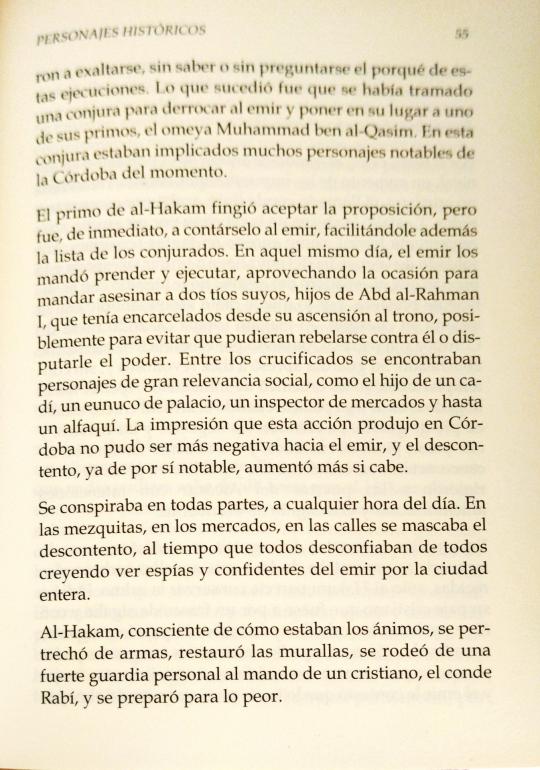
gan to exalt, without knowing or without asking themselves the reason for these executions. What happened was that a plot had been hatched to overthrow the emir and put in his place one of his cousins, the Umayyad Muhammad ben al-Qasim. Many notable people from the Córdoba of that time were involved in this conspiracy. Al-Hakam's cousin pretended to accept the proposal, but was immediately to tell the emir, also providing him with the list of the conspirators. Inthat same day, the emir ordered them to be arrested and executed, taking advantage of the occasion to order the murder of two of his uncles, sons of Abd al-Rahman I, who had been imprisoned since his ascension to the throne, possibly to prevent them from rebelling against him or challenging him for power. Between the crucified were figures of great social relevance, such as the son of a cadi, a palace eunuch, a market inspector and even a alfaqui. The impression that this action produced in Córdoba could not be more negative towards the emir, and the discontent, already notable, increased.
There was a plotting everywhere, at any time of the day. In the mosques, in the markets, in the streets discontent was chewed, while everyone distrusted everyone, believing they saw spies and confidants of the emir throughout the entire city.
Al-Hakam, aware of the mood, equipped himself withweapons, restored the walls, surrounded himself with a strong personal guard under the command of a Christian, Count Rabí, and prepared himself for the worst.
#book scans#al andalus. historical figures#al andalus. personajes históricos#al andalus#al andalus history#bookblr#historyblr#spanish history#sulayman ibn yaqzan ibn al-arabi#amrus ibn yusuf#rabadies#rabadi#al hakam i#al hakam i of córdoba#emirate of cordoba#umayyad emirate of córdoba#middle ages#rabadid dinasty#hisham i#hisham i of cordoba
10 notes
·
View notes
Text
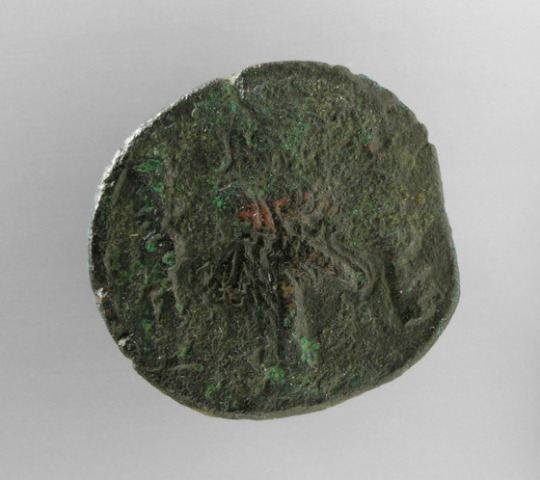
Bronze Fals. Palestine, Umayyad (661–750).
The Los Angeles County Museum of Art.
#art#culture#middle eastern history#medieval history#medieval#middle east#middle eastern#umayyad#umayyad caliphate#coins#ancient history#history#palestinian#Palestine
11 notes
·
View notes